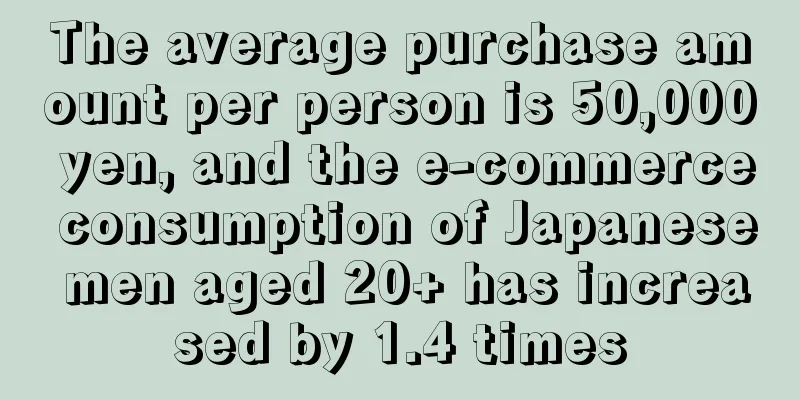Cross-border e-commerce platforms are eyeing the industrial belt

|
Cross-border e-commerce platforms are eyeing the industrial belt
The combination of industrial belts and cross-border e-commerce is actually a win-win situation.
China currently has hundreds of industrial belts with their own characteristics. They are usually clustered according to regions and are also called industrial belt factories . In recent years, the term "industrial belt" is no longer a new term. Wigs in Xuchang, Henan, dinosaurs in Zigong, Sichuan, glasses in Danyang, Jiangsu, and coffins in Cao County, Shandong are well known.
A group of pioneers have taken advantage of the cross-border e-commerce trend and have successfully torn off the label of brand OEM and established their own brands. The full-hosting transformation has allowed the industry to enter the cross-border e-commerce market on a large scale, and the industry inflection point has come again.
As inflation in Europe and the United States continues, people's dependence on Chinese manufacturing has deepened, and Chinese factories are eager to "go overseas" to grab the market. However, to move from traditional industries to cross-border e-commerce, it is not only necessary to change operational thinking, but also to face the complex international environment. Pinduoduo's overseas e-commerce platform Temu has fired the first shot of "full trusteeship". Its authorized merchants only need to supply goods and prepare goods for warehousing. Other sales, operations, warehousing, distribution, returns and exchanges, after-sales service and other links are all the responsibility of the platform. This method of lowering the threshold for entry and operation and innovating sales quickly gathered a large number of domestic industrial belts. At that time, the industrial belt factories themselves found opportunities to expand international business opportunities and face consumers directly. Temu also relied on the industrial belt to take off and quickly gained a reputation in many countries around the world. The number of downloads and visits continued to rise. In December 2023, the number of independent visitors to Temu reached 467 million, ranking second in the world.
When Temu launched the full hosting service, AliExpress and TikTok Shop also quickly launched the "full hosting store" model. China's "Four Little Dragons Going Global" fully embraced this new model. The "Four Little Dragons Going Global" launched a "fierce attack" on the factories in the industrial belts, using various tricks to attract them to settle in...
Whether more and more factories are embracing "full trusteeship" or traditional industrial belt factories are taking advantage of the cross-border e-commerce to complete transformation and upgrading, it is definitely inseparable from the strong desire for change of the industrial belt factories themselves. However, the indispensable "power" behind this phenomenon is the strong support of national policies and the active promotion of major cross-border e-commerce platforms...
Cross-border e-commerce platforms are eyeing the industrial belt
Not long after the beginning of the year, AliExpress has held a number of clothing investment conferences, targeting cross-border clothing sellers and source factories to increase investment, which is said to be the "largest investment and greatest determination" in the reconstruction of clothing supply. It is reported that AliExpress has launched intensive clothing investment conferences, and the first batch will be held in multiple clothing advantage industrial belts, including Guangzhou, Quanzhou, Hangzhou, Yiwu, Shenzhen and other places.
TikTok Shop cross-border e-commerce "Directly to the Industrial Belt" series of activities are also touring the country, aiming to help local sellers gain a deeper understanding of TikTok Shop cross-border e-commerce full-hosting model.
Similar situations also happened to e-commerce platforms such as Temu and SHEIN. Cross-border e-commerce platforms have long been eyeing the industrial belt .
As early as 2020 , AliExpress launched the Industrial Belts and Ten Thousand Merchants Recovery Plan to achieve the "three hundred" goals: it united more than 100 provincial, municipal, district and county governments across the country to activate and boost more than 100 industrial belts, relying on the digital capabilities and infrastructure accumulated by Alibaba Group over the years to open up a new track for millions of small and medium-sized enterprises to go overseas.
The emergence of the Temu platform has brought the cross-border overseas expansion of industrial belt manufacturers to a new level with the full-hosting model. Temu focuses on attracting industrial belt factory sellers in the name of full-hosting, triggering a new trend of traditional industrial belt factories entering cross-border e-commerce on a large scale.
Yienjun learned that starting from March 2023, the special team of Pinduoduo's overseas support plan will go deep into 100 high-quality industrial belts in China, such as Guangdong, Zhejiang, Jiangsu, Shandong, and Hebei, to recruit factory-type sellers to enrich Temu's seller lineup , helping factories to accelerate their overseas expansion and reach more than 40 countries and regions around the world .
Launching support plans for factories in industrial belts has become a regular practice for major cross-border e-commerce platforms. The competition among e-commerce platforms for industrial belts is actually an inevitable trend.
The competition between cross-border e-commerce platforms is very fierce. As cross-border online traffic becomes more and more expensive, the competition between platforms will only become more intense. Whoever can attract and retain enough consumers will be the ultimate winner. In the battle for consumers, the "ultimate supply chain" plays an indispensable role. In addition to competing on low prices, the giants are also competing on efficiency. The industrial belt just fills the platform demand.
As we all know, a certain industrial belt often gathers a large number of upstream and downstream enterprises in the industry chain . It can be said that it has rich resources in the entire supply chain, which can achieve fast and accurate supply , fully meeting the current cross-border e-commerce's pursuit of faster speed . Moreover, compared with other sellers, industrial belt factories are source enterprises, with little room for product premium, and cost factors can be optimized, so they can provide more high-quality and low-priced goods, which just meets the consumer's consumption mentality of pursuing "cost-effectiveness".
In general, cross-border e-commerce platforms have deeply cultivated industrial belts and mastered a large number of high-quality supply chain resources, which has increased the richness of commodity supply and the degree of control over products , and mastered the code to attract consumers. More consumers can bring a better positive cycle and provide high-quality support for the long-term development of the platform. Therefore, major e-commerce platforms generally show their sincerity and launch a series of favorable policies from the perspective of merchants in the industrial belts .
The full trusteeship model is a point that cannot be ignored. The four Chinese companies that have gone global have used the full trusteeship model to open up a simple and efficient era for factories in the industrial belts to go global . Merchants in the industrial belts only need to focus on the research and development and quality improvement of the goods themselves , without having to get involved in the complex overseas operation process. The tedious operations, logistics, after-sales and other links are all handed over to the platform .
In addition to full trusteeship, major e-commerce platforms have also come up with various tricks to provide other "favors" for factories in the industrial belt. Take AliExpress as an example. According to investment materials, AliExpress has added a women's clothing channel Viva on its homepage , targeting merchants with high-quality clothing supply chain and source factories. Merchants can enjoy a series of incentive policies, including: large subsidies directly reduced by the platform, promotion of exclusive channel resources, deterministic traffic support inside and outside the site, the highest increase in investment in history, and 1-on-1 exclusive docking with shop assistants.
China's e-commerce platforms continue to focus on industrial belt factories and have achieved good results.
The latest data released by freight consulting firm Cargo Facts shows that SHEIN, Temu, AliExpress and TikTok ship more than 10,000 tons of goods overseas every day, which is equivalent to the capacity of 108 Boeing freighters. Specifically, Temu ships 4,000 tons per day, SHEIN ships 5,000 tons per day, AliExpress ships 1,000 tons per day, and TikTok ships 800 tons per day. Most of these products come directly from Chinese factories.
According to Sensor Tower data, Temu and SHEIN will have strong growth in downloads in 2023, and will take the first and second place in the e-commerce application growth list in the United States, Europe, Latin America and the Middle East, surpassing Amazon and others to become the most popular e-commerce applications in the world. From September 2022 to November 2023, Temu's global downloads exceeded 300 million times; from May 2014 to date, SHEIN's cumulative downloads have reached 830 million times, with Latin America and Europe contributing 31% and 25% of the total downloads respectively.
The four little dragons of China's overseas expansion have emerged as a new force, eroding the market share of Amazon, the dominant cross-border e-commerce platform. They have also provided more channels for Chinese sellers to go overseas, and more and more Amazon sellers are choosing to join these platforms.
According to a report by Marketplace Pulse, a market research organization , Chinese sellers account for nearly 50% of the total number of top sellers on Amazon's US site and nearly half of Amazon's third-party GMV. Since 2016, the share of Chinese sellers in the US market has been growing steadily, which has also driven the market share of Amazon's third-party sellers to grow by an average of 150% per year. The importance of Chinese sellers to Amazon is self-evident.
Due to various factors, it is an inevitable choice for Amazon to seize sellers in the industrial belt.
In August 2023, Amazon Global Selling released the "Ten Measures to Start the Industrial Belt" (referred to as the "Ten Measures to Start the Industrial Belt") support plan, which aims to promote the integrated development of "cross-border e-commerce industrial belts" from five aspects: business opportunity expansion, brand building, localized services, talent cultivation, and brand benchmarking. It will help more traditional manufacturing industries in industrial belts to further leverage their supply chain advantages, accelerate digital transformation and upgrading, seize new global business opportunities, and build "global brands."
Amazon said it would go deep into the industrial belts of nine provinces and 19 cities, provide on-site guidance and other targeted support to local companies, and help them reach six million high-quality overseas companies and institutional buyers through Amazon Business Purchasing. At the same time, it would provide three consecutive years of account support and priority connection for large bidding orders and other resource support to leading companies in high-potential high-quality industrial belts.
For brand sellers, a flagship brand support plan exclusive to multiple industry belts will also be launched. Taking Zhejiang, Shandong, Fujian, Jiangsu and other provinces as examples, Amazon Global Selling has launched an industry belt empowerment plan with the relevant provincial commerce departments and local municipal commerce bureaus. Sellers shortlisted for the support plan can enjoy brand overseas training courses, special offers for Amazon's brand protection rights and interests Transparency plan, and one-year exclusive services for key customers for benchmark companies.
Want to face consumers directly and build a brand! Industrial belt factories actively seek change
The battle for cross-border e-commerce platforms and industrial belts has brought the entire industry to a new turning point. The platforms have benefited from the industrial belts, and the industrial belts are also actively seeking change by relying on cross-border e-commerce. No matter how you look at it, it is a win-win situation.
Huludao Xingcheng swimwear industrial belt, Henan Xuchang wig industrial belt, Jiangsu Changshu women's clothing industrial belt, Zhejiang Shaoxing home textile and home decoration industrial belt, Jiangsu Danyang glasses industrial belt, Tianjin carpet industrial belt, Guangdong Shantou Chaoyang underwear industrial belt, Shiling luggage industrial belt, Guangdong Zhongshan lighting industrial belt, Shandong Weihai fishing gear industrial belt, Zhejiang Anji office chair industrial belt ... China's industrial belts are very rich in industrial resources. There are currently hundreds of industrial belts with their own characteristics. They are distributed all over the country and have their own unique advantages and huge development potential. The industrial belts have indeed produced many brand sellers, such as Mercury Home Textiles and Rebecca, but overall, there are many white-label factories among them , and most of them face the basic pain points of transformation and upgrading.
A sudden epidemic a few years ago interrupted normal overseas trade exchanges and the normal business processes of traditional foreign trade factories. The OEM labels that they once wanted to tear off were "dropped" before they found other ways out. A group of factories went through the darkest moment, and the layout of cross-border e-commerce became a top priority.
Data shows that in recent years, China's cross-border e-commerce has developed steadily. In 2023, the import and export volume of cross-border e-commerce reached 2.38 trillion yuan, an increase of 15.6%, 15.4 percentage points higher than the national import and export. At present, there are more than 100,000 foreign trade import and export companies in China engaged in cross-border e-commerce, which is a very powerful force. In order to continue to cultivate cross-border e-commerce, a new driving force for foreign trade, the Ministry of Commerce has proposed many measures, one of which is very important: developing "cross-border e-commerce + industrial belts" and encouraging traditional foreign trade companies to transform into cross-border e-commerce.
Other places followed suit.
Shenzhen issued measures to promote stable scale, stable share and stable growth of foreign trade, emphasizing the development of the "cross-border e-commerce + industrial belt" model, increasing support for the export credit insurance underwriting limits of key industrial clusters and specialized "little giant" enterprises, and helping enterprises expand overseas markets; vigorously develop the "cross-border e-commerce + industrial belt" model, and support industrial enterprises with obvious brand effects and high degree of product standardization to carry out cross-border e-commerce export business through "third-party platform + independent station".
Shandong strives to build 20 cross-border e-commerce featured industrial belts in the province by 2025, cultivate 100 well-known cross-border e-commerce brands with strong international competitiveness, incubate 1,000 new cross-border e-commerce companies, realize cross-border e-commerce industry agglomeration, brand gathering, efficient services, ecological prosperity, and promote foreign trade to stabilize the scale and optimize the structure. At present, more than 40 featured industrial clusters in Shandong, such as fishing gear, willow weaving, wigs, fitness equipment, and wooden handicrafts, are using cross-border e-commerce to shape brands and expand exports.
Similar policies have been emphasized again and again by Henan, Zhejiang, Shanghai, Jiangsu, Hebei, etc. In summary, cross-border e-commerce has become a trend that cannot be ignored. Nowadays, the rapidly developing characteristic industrial belts provide an important driving force for promoting regional development. Cross-border e-commerce will further activate the advantages of industrial belts in various places and bring about the positive results of "1+1>2" in industrial development and foreign trade exports.
The research results of Yibang Think Tank show that in the lighting industry belt of Zhongshan, Guangdong, cross-border e-commerce sales have accounted for about 60% of the total sales; in the furniture industry belt of Foshan, the proportion of cross-border e-commerce transactions exceeds that of traditional foreign trade by 59%; in the wedding dress industry belt of Xiamen, Fujian, the scale of cross-border e-commerce transactions of more than 50% of enterprises accounts for more than 20% of the total export scale; in the Tonglu industry belt of Zhejiang, more than 50% of local enterprises have transformed into cross-border e-commerce.
An industry insider named "Factory Manager in the Wind" previously stated that objectively speaking, the threshold for engaging in cross-border e-commerce or foreign trade is much lower than before. Both Pinduoduo 's Tenu and Alibaba's AliExpress are actively soliciting investment, targeting factory owners and business owners integrating industry and trade.
Amazon's global vice president Cindy Tai believes that cross-border e-commerce can help industrial enterprises develop more extensive sales channels, expand more diversified business models for both the C-end and B-end, and help industrial enterprises gradually transform and upgrade to digitalization through docking with end customers, and truly build international brands. The "cross-border e-commerce industrial belt" model is a powerful combination of new formats and high-quality supply chains, which will create a powerful superposition effect.
According to 21st Century Business Herald, Yang Jun, Vice President of Amazon China and Head of Amazon Global Selling Asia Pacific Enterprise Purchasing, said that China's current cross-border e-commerce industry belt has the following characteristics:
First of all, some industrial belts themselves have strong traditional manufacturing capabilities. For such industrial belts, the platform will help the companies therein accelerate their digital transformation, help them understand cross-border e-commerce as soon as possible, and directly reach overseas consumers through cross-border e-commerce.
In summary, when industrial belt factories meet cross-border e-commerce, the two sides can be said to be "hitting it off". Cross-border e-commerce helps them break out of the shackles of "tradition" and "new flowers on old trees", which not only brings them orders, but also brings the possibility of building brands ... In recent years, more and more industrial belt factories have seized the opportunity to go overseas with the help of cross-border e-commerce channels, and have made great progress in product innovation, brand building, and global business layout. However, a phenomenon that cannot be ignored is that many industrial belt factories started with OEM, lack core technology, have low product profit margins and added value, and do not seek change. These problems still exist after switching to cross-border e-commerce, and industrial belts generally face pain points such as different production processes, low penetration of digital R&D tools, and unclear digital paths in the process of digitalization. Even if full hosting solves many problems, they are inevitably constrained by third-party e-commerce platforms . If you want to be the final winner, you must have your own core advantages.
In any case, for those factories in the industrial belts that have been well prepared, the spring of cross-border e-commerce has just begun.
|
<<: Started with a data cable, Shenzhen is selling like hot cakes and preparing for IPO!
>>: Another strict investigation! A large number of seller accounts have been suspended
Recommend
What is material kitchen? material kitchen Review, Features
Material Kitchen specializes in beautifully design...
22 yuan/kg for the ransom? The owner refuses to pay! The latest plan is a big deal again
On April 16, the Fengbang Logistics cargo detenti...
What is Velfix? Velfix Review, Features
Velfix provides users with a one-stop solution fo...
What is btf-lighting? btf-lighting Review, Features
btf-lighting specializes in the production of LED ...
Latin American e-commerce giant MercadoLibre's losses widened in the first quarter of this year
In the first quarter of 2021, MercadoLibre report...
What is Step? Step Review, Features
<span data-docs-delta="[[20,{"gallery"...
What is Supercheap Auto? Supercheap Auto Review, Features
Supercheap Auto is an Australian automotive parts ...
The Philippines is in emergency lockdown, logistics are in crisis, sellers should beware of container goods being auctioned off!
Philippines imposes one-month entry ban According...
A small product worth $10 was revamped, with an annual revenue of 1.2 billion yuan and is preparing to enter the A-share market
How many miracles can be created by using a singl...
What is Andalin? Andalin Review, Features
Andalin is an Indonesian online import and export...
UPS generated $23.2 billion in revenue in the third quarter! Shipping rates will increase next year!
UPS recently announced its best revenue data ever...
What is EasyYa? EasyYa Review, Features
EasyYa is a service platform under YiChuang that ...
Several agency operating companies were arrested!
When mentioning the term "agent operation&qu...
UK Shopify sellers doubled their skincare sales, but the clothing industry is facing a cold winter
According to a report on the retailtimes website ...
What is Buyee? Buyee Review, Features
Buyee provides the most comprehensive and professi...









